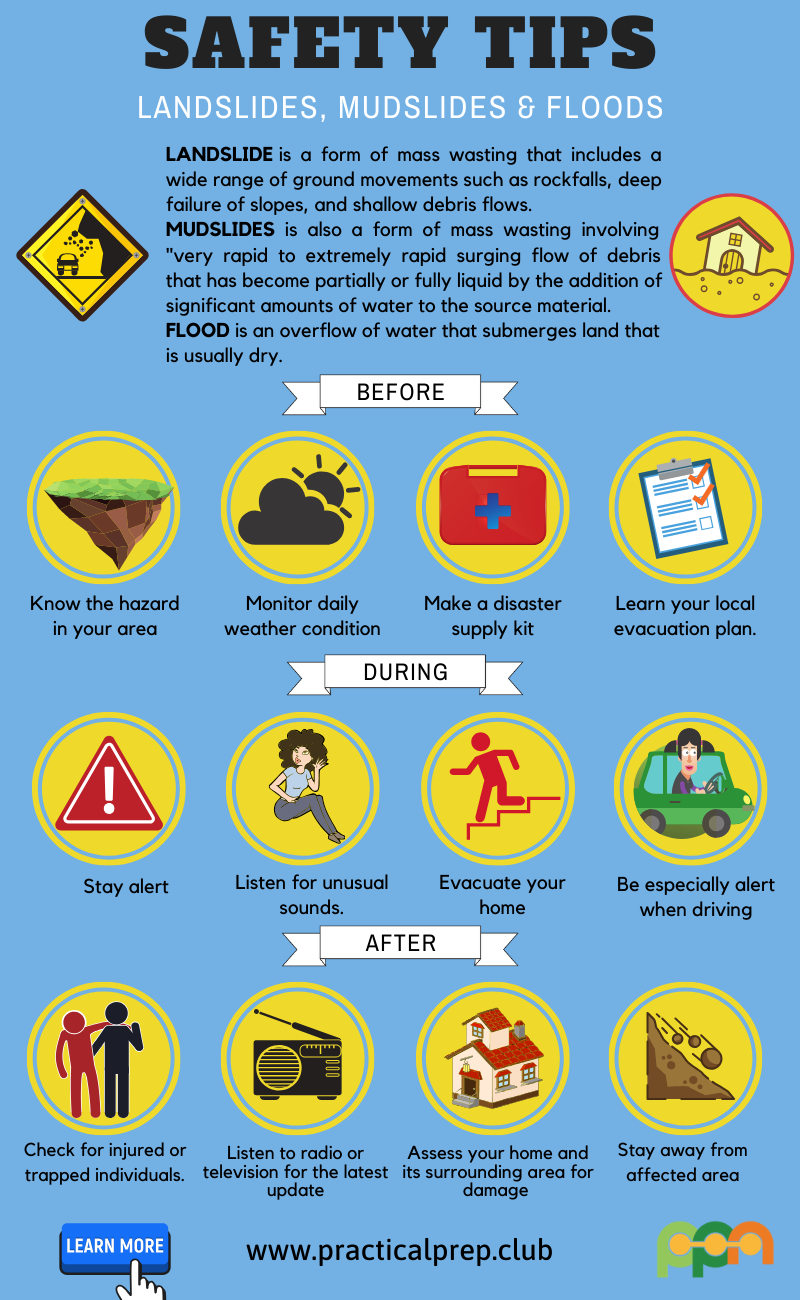Flash Flood Emergency: What To Do Before, During, And After

Table of Contents
Flash floods are terrifyingly fast and powerful, capable of causing devastating damage and loss of life with little warning. Understanding how to prepare for, react to, and recover from a flash flood emergency is crucial for protecting your family and your property. This comprehensive guide outlines essential steps to ensure your safety and minimize the impact of this dangerous natural event.
Before the Flash Flood: Preparation is Key
Proactive preparation is your best defense against the destructive power of a flash flood. Taking the time to plan and gather essential supplies can drastically reduce the risk and impact of such a disaster.
-
Develop a Family Communication Plan: A clear communication strategy is vital during emergencies.
- Establish a meeting place: Designate a readily accessible, safe location outside your home, known to all family members, in case of evacuation.
- Designate an out-of-area contact person: Choose someone outside the affected area who can serve as a central point of contact for your family.
- Learn how to receive emergency alerts: Sign up for weather alerts via your mobile phone, download a reliable weather app, and consider a NOAA weather radio for reliable emergency broadcasts.
-
Create a Go-Bag: Assemble a kit of essential supplies you can grab quickly during an evacuation. This should be readily accessible and easily transportable.
- Include essential documents: Pack copies of IDs, insurance policies, medical records, and other vital documents in a waterproof container.
- Pack non-perishable food and water: Stock at least a three-day supply of non-perishable food items and potable water.
- Include medications, first-aid kit, and flashlights: Pack a well-stocked first-aid kit, all essential medications, flashlights with extra batteries, and a whistle.
-
Identify Safe Zones and Evacuation Routes: Knowing your surroundings is critical for survival.
- Know high-ground areas: Identify higher elevation areas within your community that you can reach quickly during a flash flood.
- Familiarize yourself with local evacuation routes and shelters: Utilize online mapping tools, local government websites, and emergency services websites to locate designated evacuation routes and shelters in your area.
- Map out multiple escape routes: Plan at least two distinct escape routes from your home and workplace, considering potential road closures or obstructions.
During a Flash Flood Emergency: Immediate Actions
When a flash flood warning is issued, immediate action is paramount. Your top priority is to protect yourself and your loved ones from harm.
-
Seek Higher Ground Immediately: The most critical action is to evacuate to higher ground as quickly and safely as possible.
- Avoid driving or walking through floodwaters: Never attempt to drive or walk through floodwaters; even a few inches of rushing water can sweep away vehicles and people. Remember the crucial phrase: "Turn around, don't drown."
- Move to the highest level of your home if caught indoors: If caught indoors, immediately move to the highest level of your home, preferably an upper floor or the attic.
-
Stay Informed and Follow Instructions: Remain updated on the evolving situation.
- Monitor weather alerts and local news: Continuously monitor weather alerts and updates from reputable news sources for the latest information.
- Obey instructions from emergency officials: Strictly follow any instructions issued by local emergency services and law enforcement.
- Stay off the roads unless absolutely necessary: Avoid unnecessary travel; stay off the roads unless it is absolutely essential to evacuate or seek immediate help.
-
Protect Yourself and Your Property (If Possible): If time permits, take steps to protect your belongings and property.
- Move valuables to upper floors: If you have time, move valuable items and possessions to higher levels of your home.
- Turn off utilities if it's safe to do so: Turn off gas and electricity if it is safe to do so and you are capable of doing so.
- Protect your home from further damage: If possible and safe, take measures to secure your home and protect it from further flood damage.
After the Flash Flood: Recovery and Cleanup
The aftermath of a flash flood often necessitates significant cleanup and recovery efforts.
-
Assessing the Damage and Reporting to Authorities: Following the flood, thoroughly assess the damage to your property.
- Check for structural damage: Carefully inspect your home for structural damage, potential hazards, and signs of instability.
- Report any damage to insurance and local authorities: Immediately report all damages to your insurance company and your local authorities.
- Document all damage with photos and videos: Thoroughly document all damages with clear photos and videos as evidence for insurance claims.
-
Safely Cleaning Up After a Flood: Floodwaters are often contaminated with sewage and harmful substances.
- Avoid floodwaters: Avoid direct contact with floodwaters at all costs.
- Use protective gear: Wear protective gear, including waterproof boots, gloves, and a mask, during the cleanup process.
- Dispose of damaged items properly: Dispose of damaged items properly according to your local guidelines and regulations to prevent disease and environmental contamination.
-
Seeking Help and Support: Don't hesitate to seek help when needed.
- Contact your insurance company: Contact your insurance company to begin the claims process as soon as it's safe to do so.
- Reach out to local disaster relief organizations: Reach out to local disaster relief organizations, such as the Red Cross, for assistance and support.
- Seek professional help for emotional distress: If you experience emotional distress or overwhelming stress, don't hesitate to seek professional help to cope with the aftermath of the disaster.
Conclusion:
Being prepared for a flash flood emergency is not merely advisable; it's essential for your safety and the safety of your loved ones. By diligently following the preparedness steps outlined in this guide—preparing proactively beforehand, acting decisively during the event, and recovering effectively afterwards—you significantly increase your chances of survival and minimize the potential impact of a flash flood. Don't wait for the next flash flood warning; start preparing for a flash flood emergency today!

Featured Posts
-
 Analysis Of Joy Crookes New Single Carmen
May 25, 2025
Analysis Of Joy Crookes New Single Carmen
May 25, 2025 -
 Beurzenherstel Na Trumps Uitstel Aex Fondsen Boeken Winsten
May 25, 2025
Beurzenherstel Na Trumps Uitstel Aex Fondsen Boeken Winsten
May 25, 2025 -
 Removal Men And A Relocation Lauryn Goodmans Unexpected Move To Italy Explained
May 25, 2025
Removal Men And A Relocation Lauryn Goodmans Unexpected Move To Italy Explained
May 25, 2025 -
 Atletico Madrid In Geriden Gelisleri Analiz Ve Istatistikler
May 25, 2025
Atletico Madrid In Geriden Gelisleri Analiz Ve Istatistikler
May 25, 2025 -
 Proposed French Law Banning Hijabs For Under 15s In Public Spaces
May 25, 2025
Proposed French Law Banning Hijabs For Under 15s In Public Spaces
May 25, 2025
